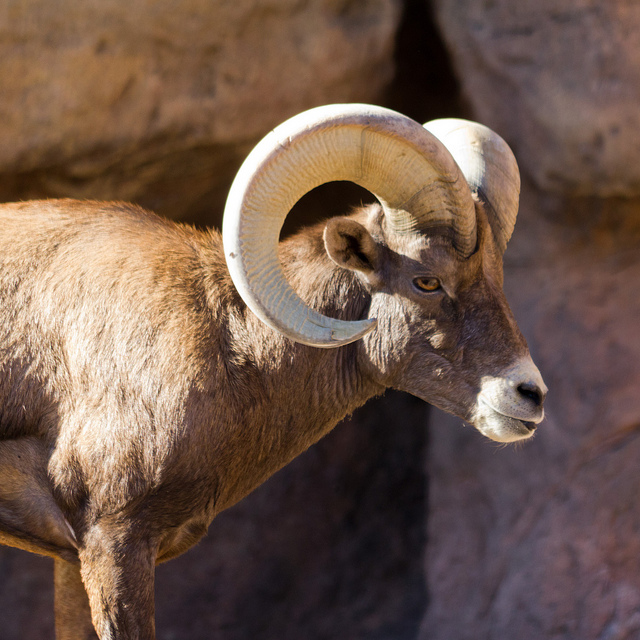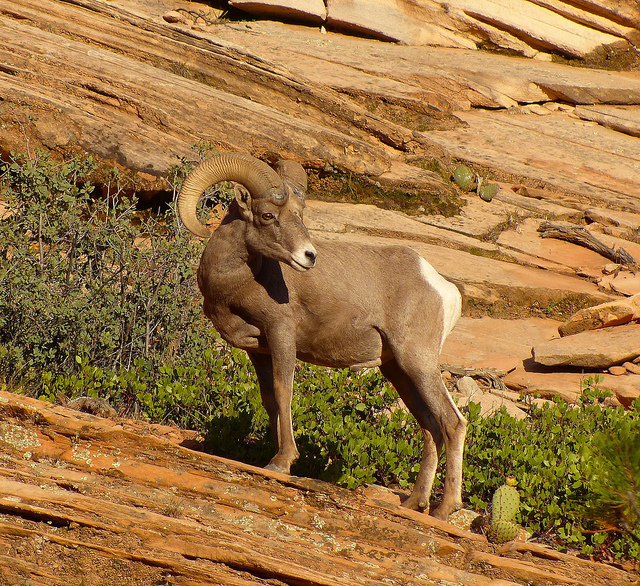Desert bighorn sheep; photo by Beth Hoffman on Flickr (noncommercial use permitted with attribution / share alike).
Official State Animal of Nevada
The endangered desert bighorn sheep (Ovis canadensis nelsoni) was designated the official state animal of Nevada in 1973. All State Mammals
Desert Bighorn Sheep Facts
Desert bighorns are stocky, heavy-bodied sheep (large rams grow to 4-1/2 feet tall and can weigh as much as 200 pounds). Found in Nevada's mountainous desert, the desert bighorn is smaller than the Rocky Mountain bighorn sheep but has a wider horn spread.
Desert bighorn sheep can go for extended periods of time without drinking water. With their unique padded hooves, bighorns are able to climb the steep, rocky terrain of desert mountains with speed and agility. Desert bighorn sheep also have keen eyesight to detect predators such as mountain lions, coyotes, and bobcats.
Both the male and female develop horns soon after birth and their horns continue to grow throughout life. Older rams have impressive sets of curling horns that can measure over three feet long and one foot of circumference at the base. The head and horns of an adult ram may weigh more than 30 pounds. Female (ewe) horns are much smaller and lighter and do not tend to curl. Desert bighorn sheep use their horns as tools to break open cactus, which they consume, (and for fighting).
The number of desert bighorns in North America prior to European settlement of the southwest was most likely in the tens of thousands. Drastic declines in the population were attributed to excessive hunting; competition and diseases from domestic livestock (particularly domestic sheep); usurpation of watering areas and critical range by human activities; and human-induced habitat changes. Desert Bighorn Sheep numbers are extremely low, although the overall population trend has increased since 1960 due to conservation measures.


